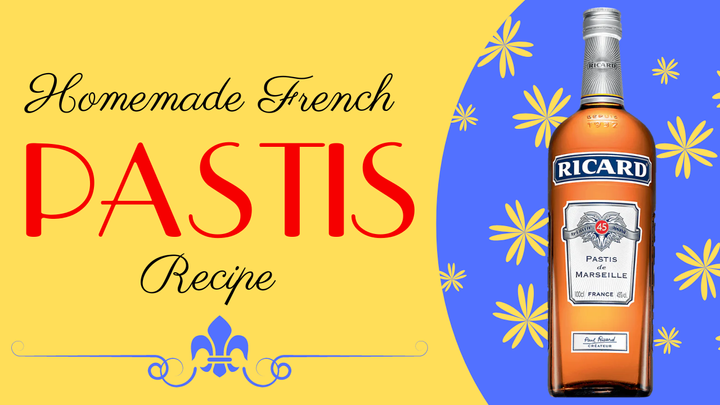Q & A: November 27, 2011
Welcome to CHEESESLAVE Q & A! Every Sunday, I answer your questions. I’ll answer as many questions as I can each week. If I didn’t answer your question this week, please check back next week.
Welcome to CHEESESLAVE Q & A! Every Sunday, I answer your questions. I’ll answer as many questions as I can each week. If I didn’t answer your question this week, please check back next week.
Submit Your Question
If you have a question to submit, please email it to me at questions AT cheeseslave DOT com.
Emails about link exchanges or requests to promote products will be deleted!
If you have an URGENT question that you can’t wait to get answered, please post it on my Facebook page. I tend to get on Facebook pretty much daily. I can’t promise to answer all the questions on Facebook, but I try! (Note: Please do NOT email me on Facebook — I can’t get through my email on there!)
1. Question: Can Traditional Nutrition Heal Fybromialgia?
Hi Ann Marie, How are you? Your website is amazing and very helpful to me.
Can traditional nutrition heal fibromyalgia? What is important to eat or avoid?
Thanks
Martine
Answer
I’m not a doctor and can’t advise anyone on how to treat disease.
That said, I’ve read about people with fibromyalgia who benefit greatly from doing the GAPS Diet. I followed a very similar diet when I was in my 20s and reversed Chronic Fatigue Syndrome. See Dr. Natasha Campbell McBride’s book, Gut and Psychology Syndrome
I’d also incorporate coconut oil, coconut milk and coconut into your diet. Read Bruce Fife’s book, Coconut Cures: Preventing and Treating Common Health Problems with Coconut. He talks about fibromyalgia in the book.
Another thing you might look into is magnesium. There’s a whole chapter on chronic fatigue and fibromyalgia in Carolyn Dean’s book, The Magnesium Miracle.
I’ve also heard of people having great results with fibromyalgia by doing “earthing”. I’d recommend reading Earthing: The Most Important Health Discovery Ever?
I am reading it now. I have been sleeping on an earthing half sheet for nearly a week now and I’m blown away at how much better I have been sleeping and how great I feel. I’m going to be doing a post on this very soon.
You can find earthing products on my resources page. You can buy earthing sheets or mats to “ground” yourself indoors. You can also just get out and walk barefoot on grass or dirt, or wear leather soled shoes. I’m looking to buy some leather soled moccasins so I can start walking everyday for the health benefits.
I hope some of these things help you. Best of luck to you and please keep us posted.
2. Question: Information On Smoke Points For Cooking Oils?
When we first got into health, we started cooking with olive oil. Then I read somewhere that olive oil has a low smoke point and that by cooking with in (like making stir frys and such), I was hydrogenation the oil.
Then we read about coconut oil and how great it was for high heat cooking. So we have been using that.
My father-in-law was making popcorn with olive oil and I told him that olive oil should not be used with high heat to use coconut oil. He said coconut oil had a lower smoke point.
So I looked it up. Olive oil has a smoke point of up to 450F depending on the type of olive oil. But coconut oil had a smoke point of 320F. I am so confused!!
Why would coconut oil, which is being touted as great for high heat cooking (which I have been making my popcorn with ever since) have such a low smoke point? And what exactly does smoke point mean and is it important? I had been taught smoke point is the point where you being to hydrogenate an oil. Is that wrong?
Thanks for the help,
Paula
Answer
You don’t need to worry so much about smoke points. If the oil you use starts to burn and smoke, the heat is too high.
I think maybe you are confusing smoke point with hydrogenated oils.
According to WiseGeek:
Oils have been hydrogenated for many decades, to prolong their shelf life and make the oils more stable. Hydrogenated oil is oil in which the essential fatty acids have been converted to a different form chemically, which has several effects. Hydrogenated oil is far more shelf stable, and will not go rancid as quickly as untreated oil. It also has a higher melting point, and is often used in frying and pastries for this reason. When hydrogenated, the chemical structure of the oil is changed, which scientists in the 1990s began to realize could result in negative health effects.
Hydrogenated oil is made by forcing hydrogen gas into oil at high pressure. Both animal and vegetable fats can be and are hydrogenated. In general, the more solid the oil is, the more hydrogenated it is. Two common examples of hydrogenated oil are Crisco and margarine.
Hydrogenated oils should be avoided at all costs. You can read more about how we’ve been hoodwinked into eating hydrogenated oils in this article: The Oiling of America.
Olive oil is fine for making popcorn. That said, I don’t personally cook with olive oil because I think coconut oil is a better choice, not because of the smoke point but because coconut oil has so many other health benefits. I typically use olive oil only for salad dressings and dips: vinaigrette, mayonnaise, pesto, hummus, etc.
I highly recommend Bruce Fife’s book, Coconut Cures: Preventing and Treating Common Health Problems with Coconut

. I swear, after you read that book, you’ll start cooking everything in coconut oil!
3. Question: Suggestions About Using A Dentist For Jaw Expansion?
I live in San Antonio & we’d like to begin jaw expansion for my 2 eldest children ages 5 & 6. We could put the money down if we knew we were staying in SA long term but my husband loses his job at the end of the year. So, when he begins sending resumes all over the country, we’d like to isolate to those cities that have orthodontic dentist who believe in this procedure. (it may be very common & if so, please tell me so, but the dentist here made it seem very rare.)
A girlfriend of mine who follows your Facebook remembered that you mentioned dentists in LA & Las Vegas who do this early procedure & so, I’d love to know the names of these dentist AND if you know of other ways to search for other dentists elsewhere. I have absolutely no idea how to begin looking all over the country… Large cities only since he’s a software architect.
Thanks!
Janet
Answer
I have to do this with my daughter, too. Her bottom jaw is fine, nice and wide, but her top jaw is too narrow and her teeth are not aligned correctly. You want to get your kids in for treatment as early as 4 or 5.
I plan to take her to see Dr. Dean Howell. He is not cheap but from what I have researched, he is one of the very best. I figure we only get this chance once so I want the best for her. We live in Las Vegas but it will be easy for us to travel to Los Angeles for appointments. The appointments with Dr. Howell are every other month. I plan to write a post about our experience with this in the spring.
I listened to Dr. Howell’s lecture at last year’s Wise Traditions conference and I was very impressed.
Dr. Howell has a technique he uses to expand the skull. He takes a small balloon and partially inflates it inside then nasal cavity. This works not only for children, but also for adults, as the plates in the skull are not fused together and can expand. In addition to the balloon, he also does different kinds of body work and spine/cranial manipulation. He also uses the Homeoblock appliance and/or a helmet for people who need them.
You can see the results of the Homeoblock here. Watch on the video how the woman’s face how her eyes actually get bigger. Also, watch how her lips get plumper. You can see that she becomes a lot more attractive. Also, watch the video on the right to see how the shape of the jaw changes and the teeth become straighter — even in an adult!
Dr. Howell treats patients in Los Angeles, Seattle, Boulder, CO, New York City, San Diego, Palm Springs, and London. Here is a webpage with his schedule.
Dr. Howell isn’t the only person out there… There are lots of other dentists and doctors to work with and Dr. Howell trains a lot of doctors. Here’s a comprehensive list of biological/holistic dentists. You could also contact Dr. Howell’s office and find someone close to you (or wherever you plan to be).
4. Question: Recommended Serving Of Grains Per Day/Week?
Hi Ann Marie,
How many servings of grains per week is healthy? Is it fine to consume 1-2 servings of grains per day? If it helps, my grandparents originated from the Mediterranean region.
Thank you,
Erica
Answer
Everyone is different. Some people do well on a diet including whole grains. Others can’t tolerate grains at all, or very little.
Dr. Weston Price studied people who ate grains pretty much with every meal. The Swiss villagers he visited are a good example. Their diet was comprised of about 50% sourdough rye bread.
Of course, I would stick with whole grains, properly soaked and/or sprouted.
5. Question: How To Cook Masa Harina?
Hi!
This will be a quick question! I just bought a bag of masa harina (corn flour soaked in lime), but I have no idea how to cook with it. I’ve heard about tamale, and it looks great! I would for sure be interested in knowing more about it for sure!
Also, I was wondering if I could substitute the yellow cornmeal I normally use to make polenta for the Masa harina ?
(Excuse my poor English; my maternal language is French.)
Thank you!
Chloé
Answer
Hi, Chloé
Your English is fine!
Here is my recipe for tamales. Tamales are traditionally made during the holiday season so it’s a great time to try making them. I’ll also be posting a recipe for Sprouted Polenta within the next week or two.
You can also use corn flour or masa harina to make corn tortillas.
Here’s my recipe for homemade corn tortillas. I’m also crazy about this recipe for Sprouted Cornbread.
Masa harina and corn flour are not the same thing. Masa harina is soaked in lime water. As far as I know, corn flour is not soaked in lime. It is necessary to soak corn in lime water (also called cal). If you eat unsoaked corn flour, the anti-nutrients in the corn will block vitamins and minerals. This is what caused the pellagra epidemic in the American South.

In the early 1900s, for example, in the American South, people were using corn more frequently in their cooking for corn breads, corn grits, and the like. However, unlike our neighbors south of the border who were soaking grains, Americans were not soaking it. As a result, we saw an epidemic of Pellagra — 100,000 afflicted in 1916. Source
Click here to read more about the importance of soaking corn and other grains: Soaking Grains: A Traditional Practice
There are two problems with modern masa harina. (1) Unless it says it’s organic, it’s likely to be genetically modified. You definitely want to avoid GMO foods. So if you buy masa harina, make sure it’s organic. (2) Even if it is organic, most store-bought masa harina is not soaked very long. Instead of soaking the corn for the traditional 1-2 weeks, the corn is typically only soaked for a very short period of time. I was told by one manufacturer that the only soak the corn for 30 minutes. This is not sufficient to adequately remove the anti-nutrients.
There are a few different ways to buy and prepare corn flour.
1) You can buy whole dent corn and soak it yourself in lime water (cal) for 1-2 weeks. Here’s my tutorial on how to soak whole corn.
2) You can buy organic ground corn flour and soak it in lime water overnight (store the corn flour in the freezer or fridge).
3) You can buy sprouted corn flour online. This is the best choice if you don’t have a lot of time to make corn flour from scratch.
In my opinion, options 1 and 3 work the best and taste the freshest. I typically use option # 3 because it’s so easy. I just store my sprouted corn flour in the freezer. I’m looking forward to making tamales for Christmas!
However, if you are not in the US, you can’t buy sprouted corn flour. I am not sure but I think Peggy from To Your Health Sprouted Flour is the only one making it. I store mine in the freezer.
6. Question: Recommendations For A Juicer? / Opinion About Using Other Stocks?
Hi Ann Marie,
I’m new to this real food thing, and I have a few basic questions:
1) I went to your Amazon store but didn’t see a juicer listed — and I can’t afford a Vitamix. Any other recommendations for a juicer, or is there a reason you don’t juice?
2) I’ve read a ton about chicken, fish and beef stock… but haven’t read anything about pork or buffalo or other types of stock. Is there a reason you (and other real foodies) mostly only use beef, chicken and fish?
Thanks for your fantastic blog!
N.B.
Answer
We really should juice as my husband is on GAPS and it really helps you detoxify. However he is willing to do coffee enemas so he’s doing that now. Juicing does take a lot of work and we’ve been super busy lately with moving. Plus, the juicers we have are packed away somewhere.
There are two juicers I recommend in addition to the Vita-Mix: (1) Jack LaLanne JLPJB Power Juicer Juicing Machine and (2) Champion Commercial Juicer G5-PG-710.
I have both juicers and they both work great; however, there are pros and cons to each. The Jack LaLanne is cheaper, so if you are on a budget, that might be the best way to go. I love the Jack LaLanne but it does take a bit of work to clean up as there are a bunch of different pieces. It’s very easy to use, though, and I like it. The Champion has fewer parts to clean.
Also, if you eat grains or plan to in the future, you can get a Champion Juicer Grain Mill Attachment. They are not very expensive so it’s a good way to go instead of buying a separate grain mill.
Most people make chicken and beef stock because it’s easy to get chicken and beef bones. It’s also relatively easy to get fish bones. It’s not as common to find pork bones, since most people do not buy whole pigs, and we typically buy boneless cuts of pork. I save my pork bones, however, whenever I buy a bone-in pork butt or similar cut. You can use pork bones to add to beans or stews for more flavor or nutrition. Or you can save enough pork bones and make pork stock. Pork stock is very common in many cultures including China, parts of Japan (Okinawa for example), South and Central America, and Spain.
Similarly, if you buy whole lambs or have a lot of lamb bones saved up — the same goes with bison, elk, venison, moose, etc. — you can make stock.
7. Question: Vitamin A While Pregnant and Trying to Conceive?
Hello Ann Marie,
I’m trying to get pregnant and I’m wondering about liver and cod liver oil. Pregnant women are told by doctors and midwives not to consume these things because of the vitamin A. However, from reading your blog I can tell that this is definitely something y’all (and all the Sally Fallon world) advocates for pregnancy (and pre-pregnancy). Do you have info about this, or can you point me in the direction of info?
Thank you,
Jenni
Answer
I do not listen to what most doctors say about nutrition. Most doctors have no training in nutrition whatsoever. Midwives and naturopaths are also often wrong. (I have a friend who drinks soy milk because her naturopath recommends it. Don’t get me started on soy milk — it’s a health hazard!)
My mother-in-law listened to her doctor when my husband was a baby. She only breastfed for several weeks, which was actually longer than most women back then breastfed (doctors typically recommended baby formula from birth.) The doctor said he was “growing too fast” and told her to stop feeding him chicken livers and whole milk. So she put him on skim milk. As a result, he has a very narrow palate, had to have braces and still wears glasses, and sleeps with a sleep apnea machine.
My mom didn’t listen to the doctors when I was a baby. She ate grass-fed ice cream every day when I was in utero. The doctors told her to use baby formula but she insisted on breastfeeding me. I have straight teeth and never needed braces or glasses.
The people Dr. Weston Price studied consumed TEN times more vitamin A (as well as vitamins D and K2) than the people of his time (1940s). Considering that people in the 1940s ate a lot more pastured lard, grass-fed butter and cream, pastured eggs, grass-fed cheese, cod liver oil, and liver and other organ meats than we do now, really don’t think you have to worry about getting too much vitamin A.
Weston Price considered the fat-soluble vitamins, especially vitamin A, to be the catalysts on which all other biological processes depend. Efficient mineral uptake and utilization of water-soluble vitamins require sufficient vitamin A in the diet. His research demonstrated that generous amounts of vitamin A insure healthy reproduction and offspring with attractive wide faces, straight teeth and strong sturdy bodies. He discovered that healthy primitives especially value vitamin-A-rich foods for growing children and pregnant mothers. The tenfold disparity that Price discovered between primitive diets and the American diet in the 1940s is almost certainly greater today as Americans have forsworn butter and cod liver oil for empty, processed polyunsaturates. (Source)
For more about the importance of vitamin A see this article on the Weston A. Price Foundation website: Vitamin A Saga.
Got a Question?
Please submit your questions to questions AT cheeseslave DOT com. I’ll answer your questions every Sunday in the order I receive them.



Comments ()